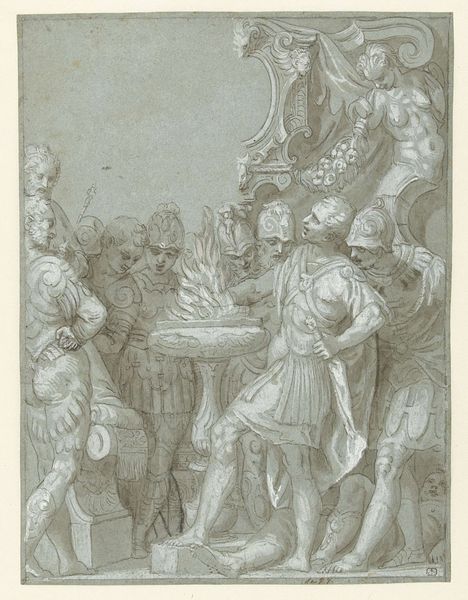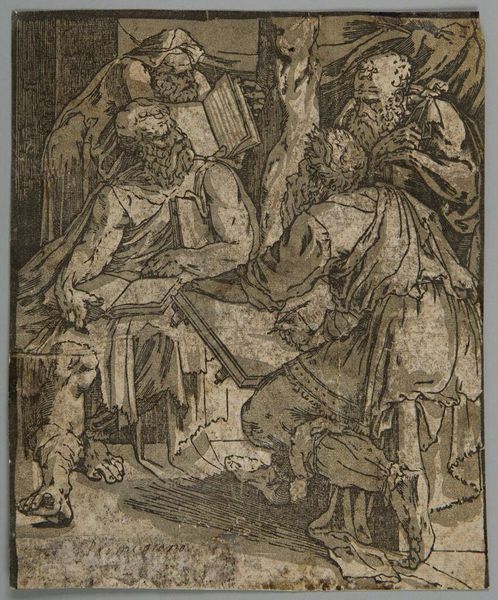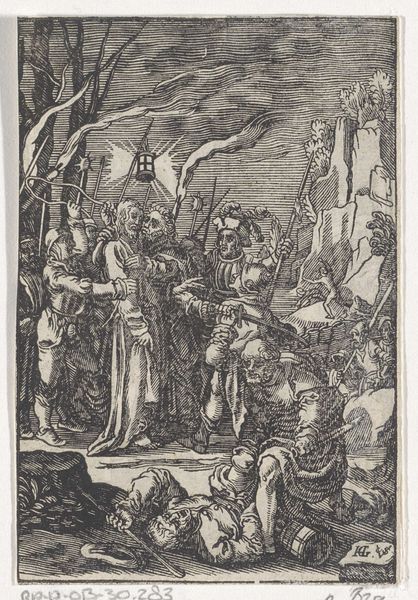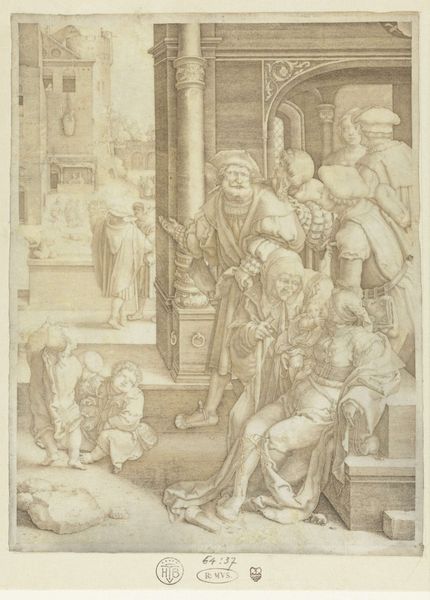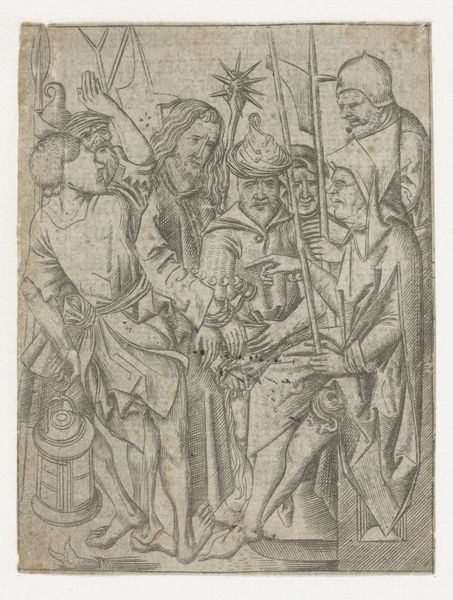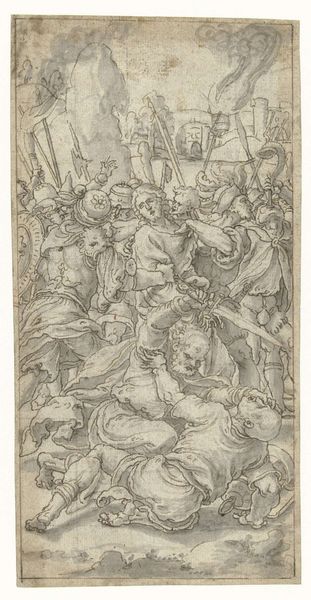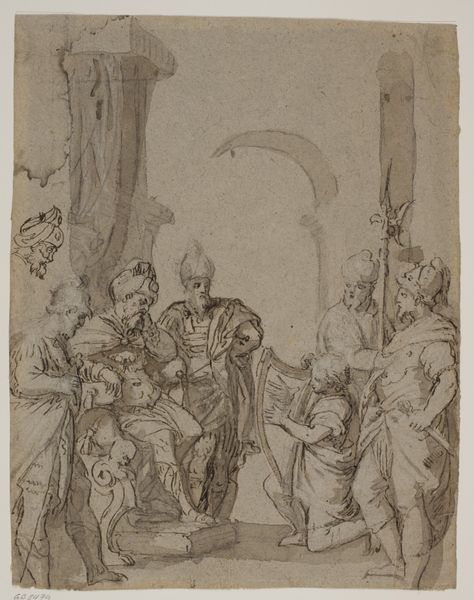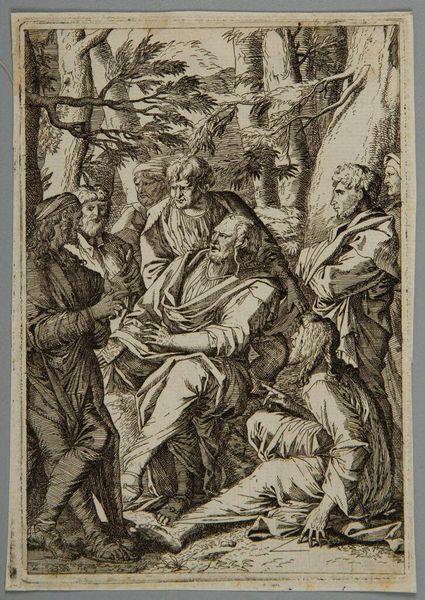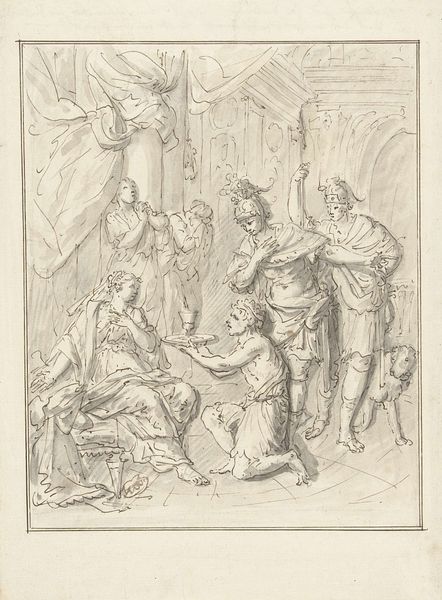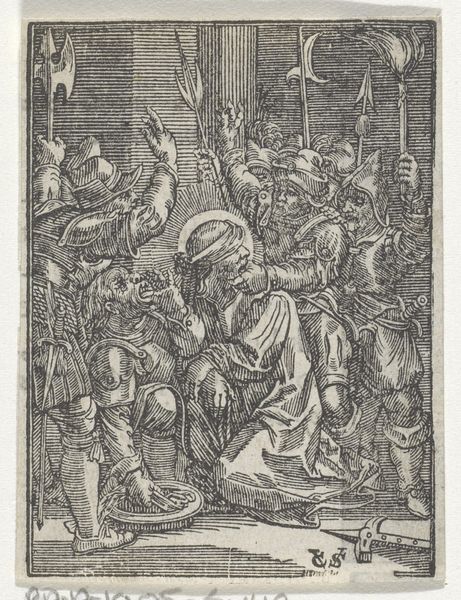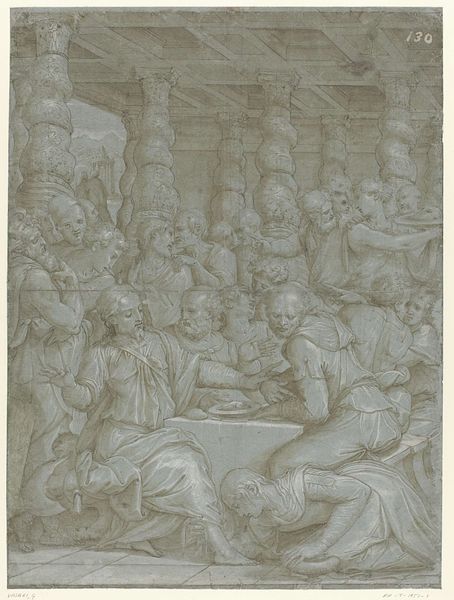
drawing
#
portrait
#
drawing
#
pencil sketch
#
figuration
#
11_renaissance
#
history-painting
#
italian-renaissance
#
watercolor
Dimensions: height 342 mm, width 259 mm
Copyright: Rijks Museum: Open Domain
Editor: Here we have "The Magnanimity of Scipio" by Benedetto Caliari, made sometime between 1550 and 1598. It’s a pencil and watercolor drawing, depicting a scene of classical history, rendered in almost monochromatic shades. It feels very performative to me; I wonder, what's your take on the social aspects of this piece? Curator: This drawing allows us to consider how historical narratives were visualized and consumed in the Renaissance. The subject matter, Scipio's magnanimity, was a popular theme embodying virtue and leadership, promoted by the elite. Note how Caliari utilizes dramatic composition and classical references, contributing to the construction of Scipio as a role model for rulers and citizens. How does the drawing’s function as a study impact your understanding? Editor: Well, knowing it's a study suggests it’s preparatory. Perhaps it shows how artists disseminated historical and moral lessons within a specific patronage system? Curator: Precisely. Consider also, where would this drawing have been viewed, and by whom? Its existence as a study complicates easy readings. Was it meant for public consumption, or the private contemplation of the artist and their patron? The choice of such a politically loaded subject also asks us to analyze whose values were being reflected in this representation of Roman virtue. The medium, a drawing, signals both intimacy and the development of an idea, furthering this reading. Editor: So, the "Magnanimity of Scipio" functions on multiple social and political levels simultaneously; it reinforces elite ideals while also participating in the artist's process? Curator: Indeed. This piece exemplifies the interwoven relationship between artistic production, socio-political values, and historical representation during the Renaissance. It shows how art actively participated in shaping public perceptions. Editor: I see how unpacking the drawing’s cultural context really brings out the depth behind the apparent virtue. Thank you!
Comments
No comments
Be the first to comment and join the conversation on the ultimate creative platform.
